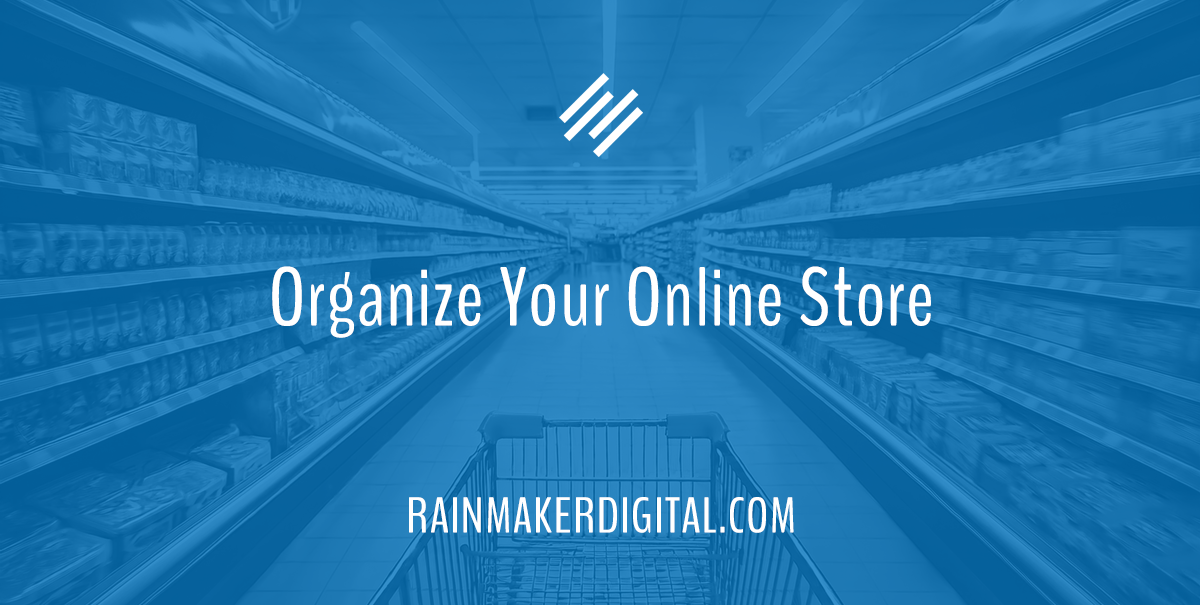How organized is your eCommerce site?
Most brick and mortar stores have pretty good organization. When you walk into a grocery store, you expect to find flour and sugar on the same aisle; it makes sense. Online stores should be similar. But I can tell you from experience … not all of them are.
I have helped clients build and optimize eCommerce websites, and many of those sites looked a lot more like a yard sale than a neatly-merchandised department store before we started.
Your eCommerce store should feel intentional and easy to navigate. Image variety, 3D tours, product unboxing videos and other bells and whistles can add value — but if your shoppers can’t find what they’re trying to buy, it doesn’t matter how good the content is. On the flip side, a well-organized eCommerce site sells for you by making it easy for prospects to buy.
Want online shopping success? Get organized. Here are the keys to a successful store.
Categorize and Tag Everything
Most eCommerce stores have two main sources of organization: categories and tags.
Categories are like departments in a physical store. An easy-to-understand category structure is the backbone of a good eCommerce site; it makes the shopping experience flow logically and ensures your audience can find what they’re looking for.
Tags are a little different. Unlike categories, they’re used to call out specific attributes of an item to make the catalog easier to browse by search or filtering.
Be careful with categories. On a site with only a few items, getting too granular with your categories will hinder the shopping experience. You don’t want one- or two-product categories where people have to click through multiple layers to buy. Think convenience store, not Walmart — it’s fine if the beans and the Cheerios are next to each other.
On tagging, only bother with the IMPORTANT attributes. Google Trends is a good source of information for what makes a good tag — look at the attributes that show up paired with your product or service. For example, if you sell coffee beans and you notice a trend that people are looking for “dark roast” or “Arabica,” tag your coffee with the proper roast and varietal so your customers can find what they want to buy.
Copy Your Competitors’ Structure
Have you ever noticed that a lot of store layouts are similar? If you have been to a Home Depot, you’ll probably be able to find your way around Lowe’s or Menard’s. The same is true online; some structures just make sense.
Take a look at the category and tag structure your competitors are using, especially if you’re just starting out. You don’t have to copy it one to one, but it should give you a sense of best practices for your audience.
Create Shortcuts to Critical Products
Some companies have a “flagship” product or service. If you’re one of them, don’t bury it deep in a category tree. Put it front and center. Think of Ford’s Mustang or F-150 … when you go to the dealership or their website, one or both will be right out front.
If a specific product or service is the main offer for your business, put shortcuts to make it easy to get to from anywhere on your site. Feature a flagship product on:
- Your home page
- Your menu bar
- Your footer
This is your selling point. Let it sell.
Your Store Structure Should Make Sense
eCommerce success comes from making it easy for a prospect to find what they want, buy what they want, and become a customer. Clear organization makes that possible. Use these tips to organize your eCommerce site and let it sell for you. And if you need a hand, don’t hesitate to reach out … just drop us a line, anytime.
Best Regards,
Ed Bardwell
President
Rainmaker Digital Services
